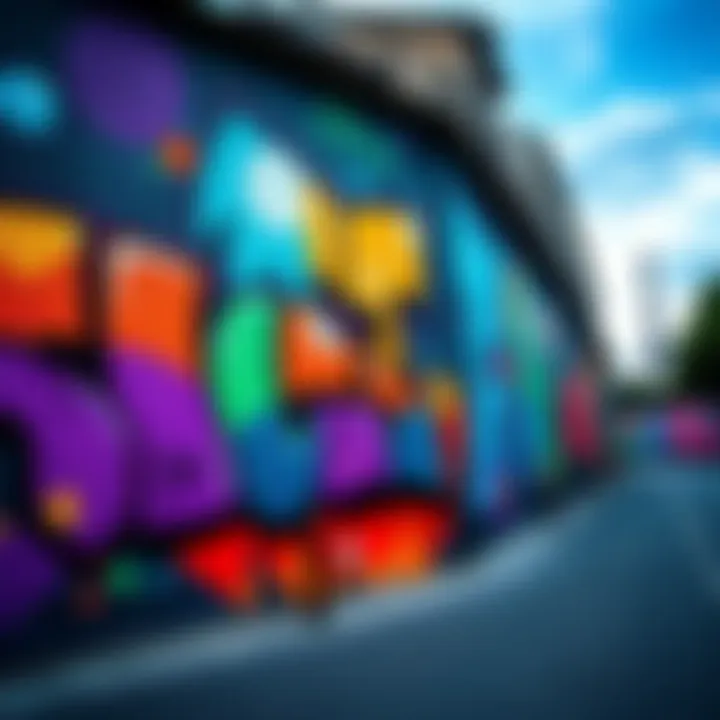Paris Graffiti | Stunning Artwork Sparks Debate
Edited By
Antoine Dubois

In Paris, a striking piece of graffiti has captured attention, igniting discussions online. Many comments celebrate the artistry while others raise questions about the intentions behind the work. The mural, attributed to artist Ludo, features a unique mix of symbolism, and its placement has observers intrigued.
The Controversy
With this mural, several people are voicing contrasting opinions. Some praise its aesthetic, noting, "Agreed, quite pretty," while others lament aspects of the work, like paint running down the wall. The artwork has prompted dialogue about urban aesthetics and artistic integrity.
Mixed Reactions to the Artwork
Many commenters engage with the details:
Tilt Issues: One user pointed out that the angle appears off but praised its overall look: "The tilt is wrong, but otherwise really nice 😎👍"
Symbol Insights: Another comment questioned the currency symbols, suggesting confusion over the artwork's intended message, highlighting the significance of such symbols in street art: "Isn't the one between dollar and Euro supposed to be Yuan?"
Location Inquiry: Curiously, several users asked where the mural could be found, indicating public interest in seeking it out.
Artistic Impact
The emotional responses illustrate varied perspectives on street art's role in urban life. The positive feedback outweighs the criticism, with artwork like this prompting people to reflect on broader economic themes. "I like the crucifix on the Dollar's headstone, because 'In God WE Trust,'" noted one commenter, emphasizing the social commentary often present in graffiti.
Highlights from the Comments
🌟 "Never saw it 😮 Where is it?" - express curiosity on its location.
🎨 "Where's the rubble and yuan? :)" - reflects on missing elements in the piece.
💬 "Quite pretty! Too bad the green paint ran down" - shares a mix of admiration and concern over its visibility.
Concluding Thoughts
This work of graffiti has not only beautified a space but has also triggered a vibrant conversation about art in public spaces. The multiple perspectives reflect the duality of street art - an appreciation of creativity coupled with critical analysis. Will this piece become a new landmark in the Parisian art scene? Time will tell.
Future Sparks in Urban Art
As the conversation around this mural continues, there's a strong chance we’ll see more public art pieces that reflect current socio-economic themes. Experts estimate around 60% of cities may seek to commission similar works, inspired by this piece's success in promoting dialogue. The increasing interest in street art's potential as a social commentary aligns with rising discussions on economic transformation, particularly in relation to cryptocurrency and urban settings. Such interactions could lead to artists partnering with local governments to create spaces for art that resonates with both beauty and critical thought.
A Brush with the Past
Interestingly, this scenario mirrors the late 1970s when graffiti began gaining traction in New York City, transforming what was once perceived as vandalism into celebrated urban expressions. Just as those early artists used the city’s walls to broadcast messages and forge identities, today's artists are navigating modern critiques and symbolisms in their works. This ongoing evolution reflects a cultural journey where art serves not just as decoration but as a voice for the people, echoing societal sentiments through each brushstroke.
